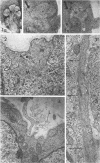Abstract
Cytochalasin B causes cultured mouse salivary gland epithelium to lose its characteristic shape and to cease undergoing morphogenesis. The drug causes disorganization of the 50 Å microfilaments in epithelial cells that are thought to control cell shape because of contractile properties. Upon removal of cytochalasin, epithelia regain normal shape and resume morphogenesis. Exceptionally large bundles of microfilaments appear in such recovered epithelial cells at points where their contractile activity could account for the changes in cell and tissue shape.
Full text
PDF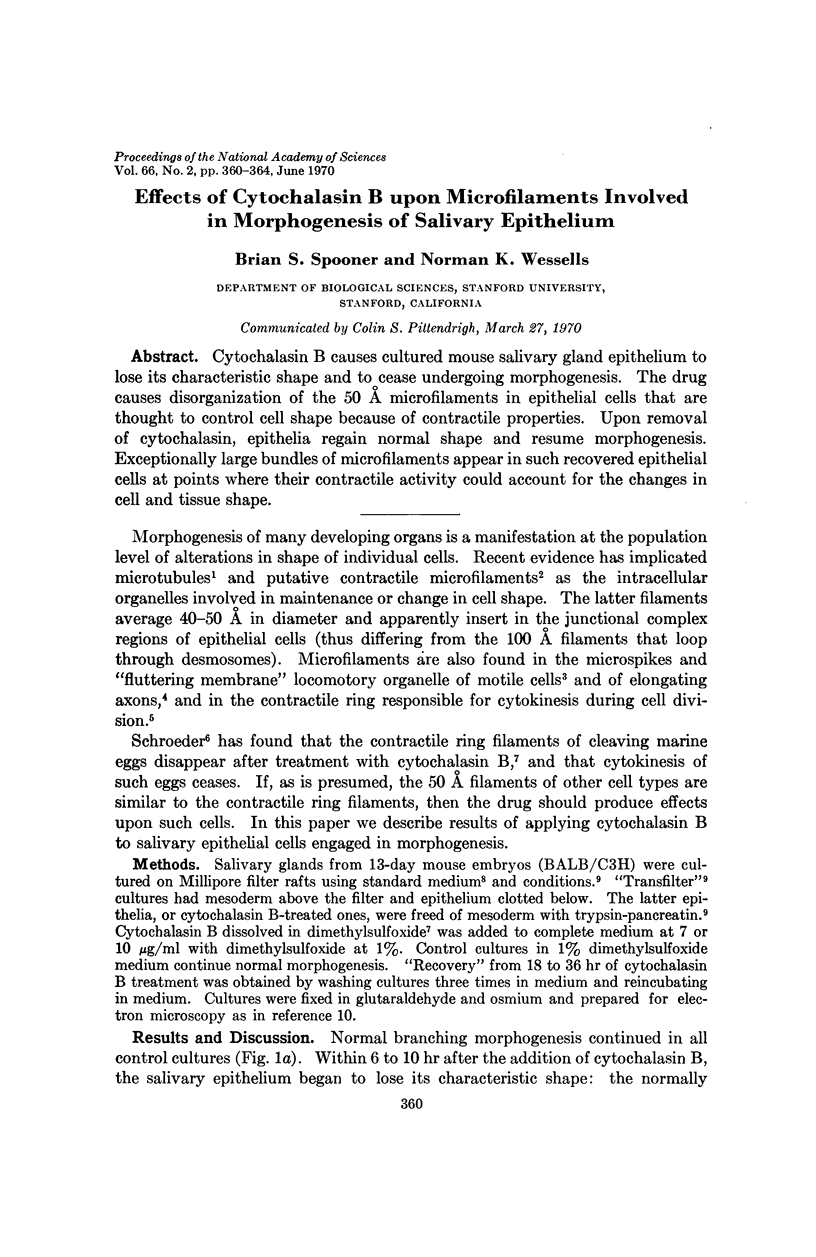
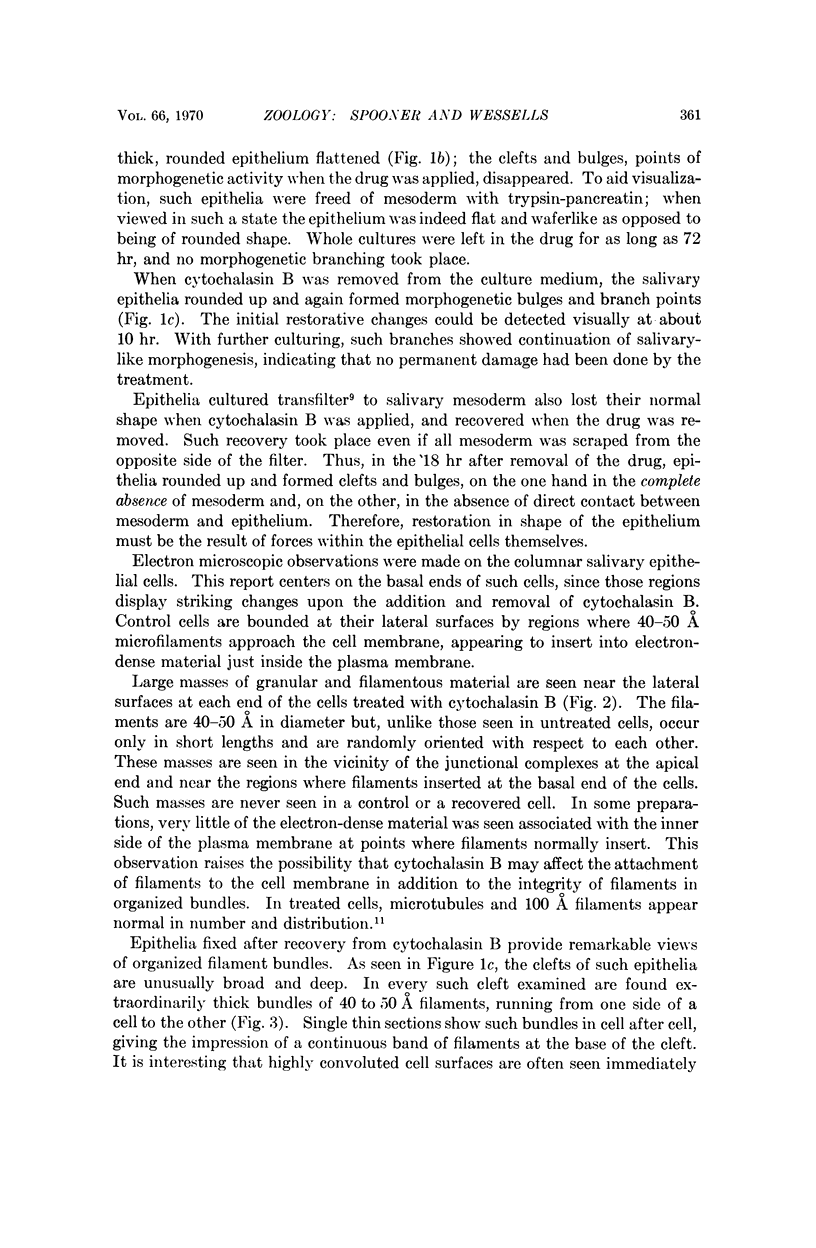
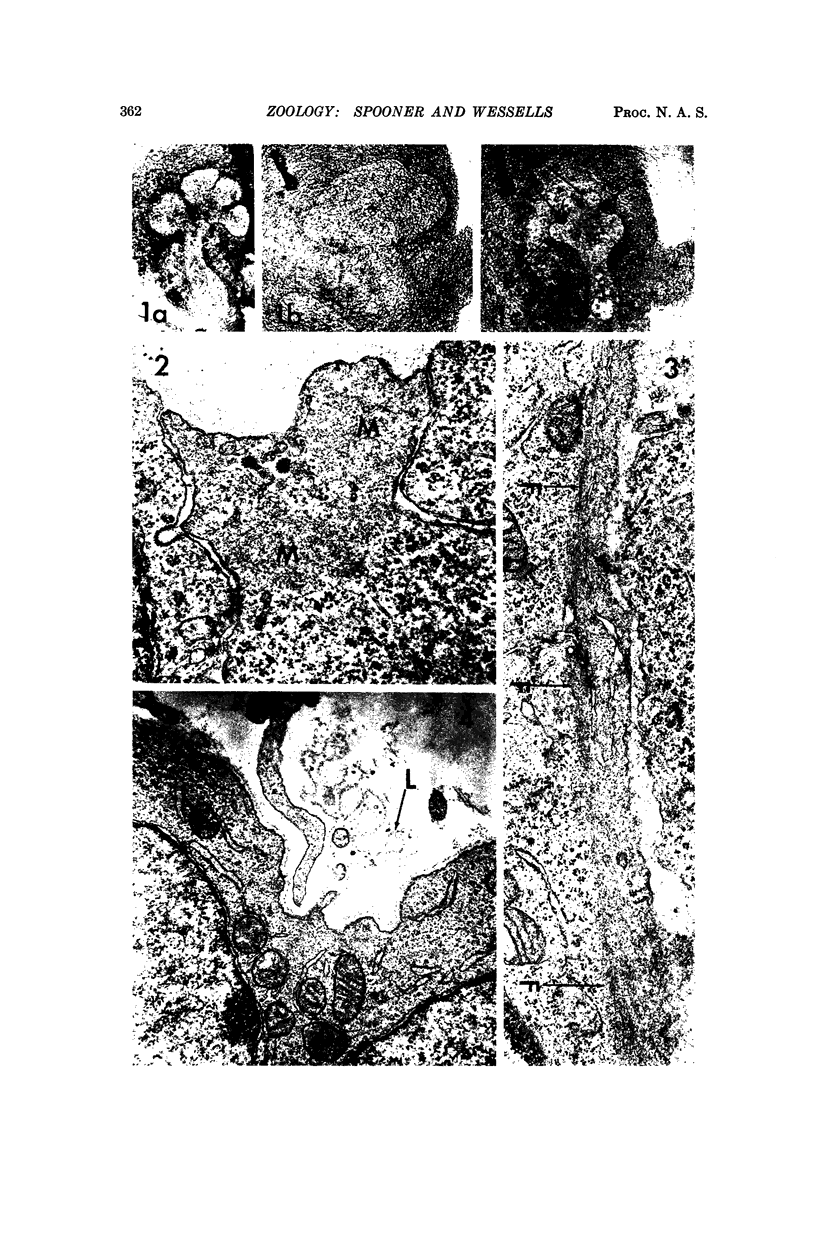
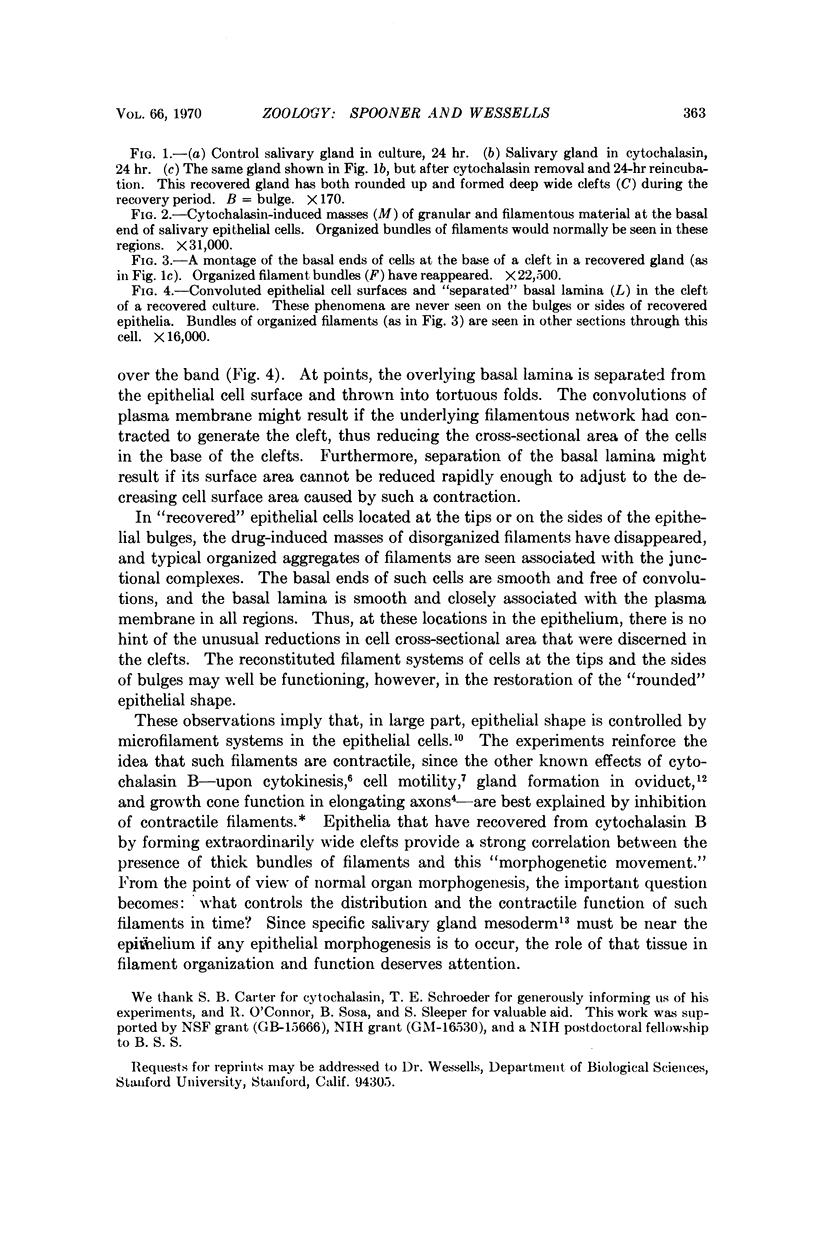
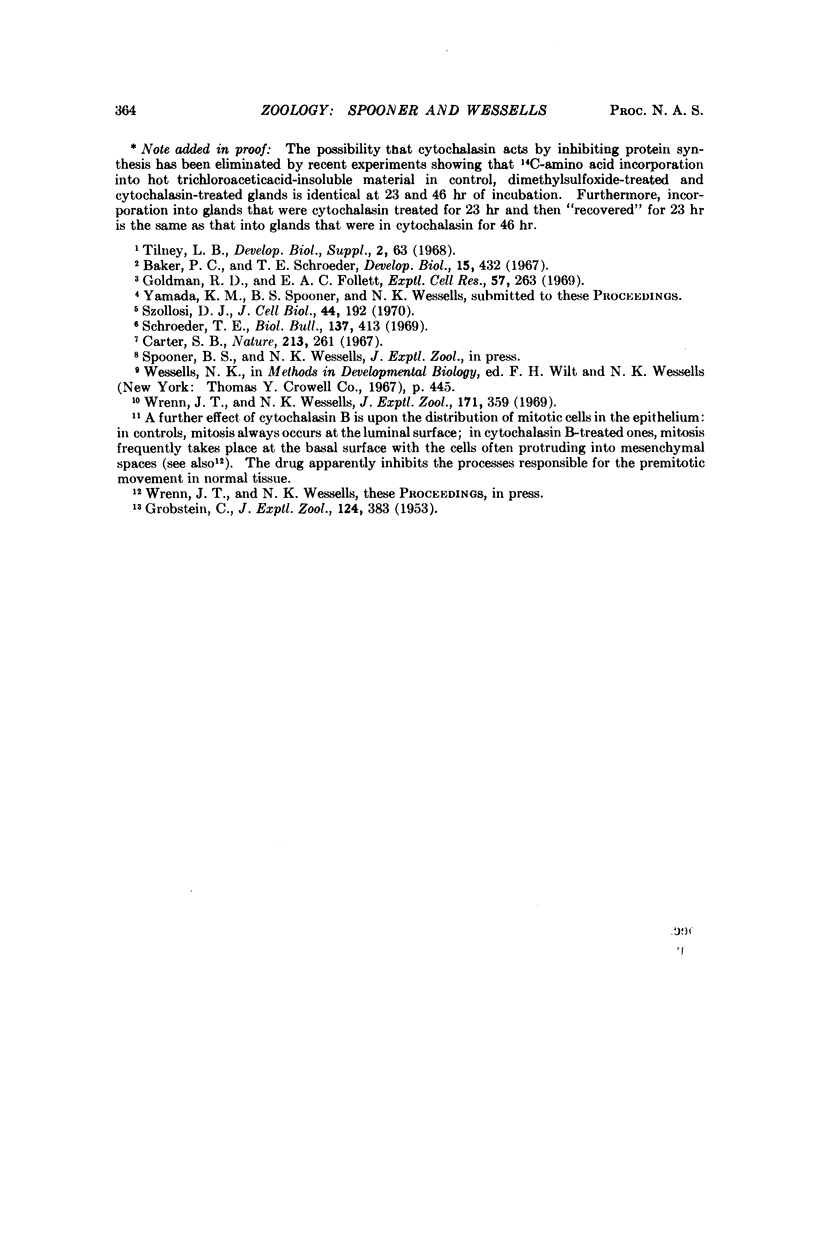
Images in this article
Selected References
These references are in PubMed. This may not be the complete list of references from this article.
- Baker P. C., Schroeder T. E. Cytoplasmic filaments and morphogenetic movement in the amphibian neural tube. Dev Biol. 1967 May;15(5):432–450. doi: 10.1016/0012-1606(67)90036-x. [DOI] [PubMed] [Google Scholar]
- Carter S. B. Effects of cytochalasins on mammalian cells. Nature. 1967 Jan 21;213(5073):261–264. doi: 10.1038/213261a0. [DOI] [PubMed] [Google Scholar]
- Goldman R. D., Follett E. A. The structure of the major cell processes of isolated BHK21 fibroblasts. Exp Cell Res. 1969 Oct;57(2):263–276. doi: 10.1016/0014-4827(69)90150-5. [DOI] [PubMed] [Google Scholar]
- Szollosi D. Cortical cytoplasmic filaments of cleaving eggs: a structural element corresponding to the contractile ring. J Cell Biol. 1970 Jan;44(1):192–209. doi: 10.1083/jcb.44.1.192. [DOI] [PMC free article] [PubMed] [Google Scholar]
- Wrenn J. T., Wessells N. K. An ultrastructural study of lens invagination in the mouse. J Exp Zool. 1969 Jul;171(3):359–367. doi: 10.1002/jez.1401710310. [DOI] [PubMed] [Google Scholar]



